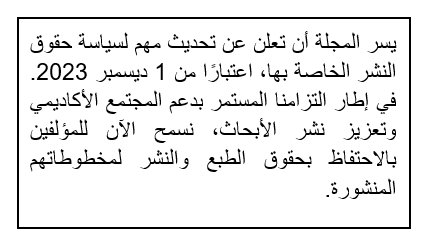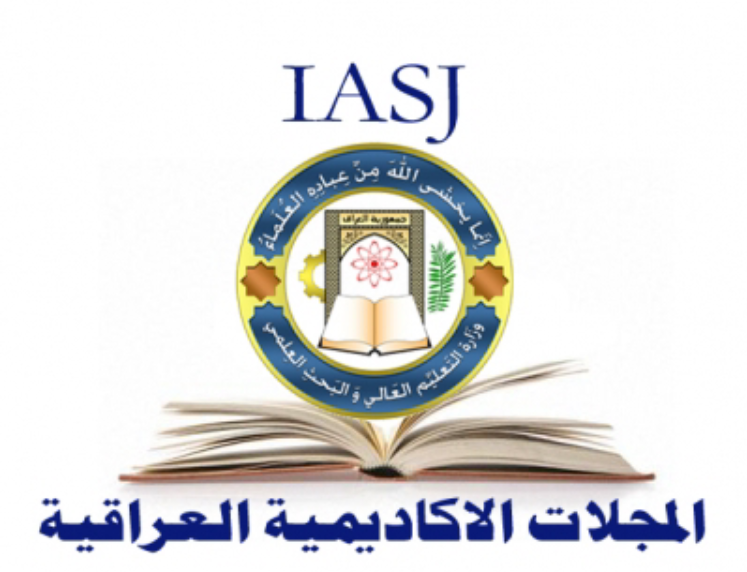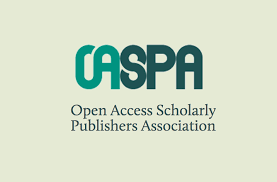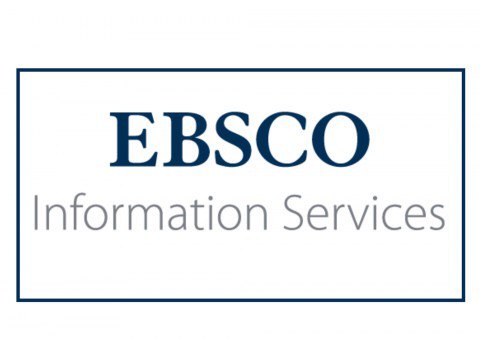دور الاتحاد الأوربي في حل الصراعات للجوار الشرقي: نماذج مختارة
DOI:
https://doi.org/10.30907/jcopolicy.vi66.667الكلمات المفتاحية:
الشراكة الشرقية، الاتحاد الاوروبي، حل الصراع، الدفاعية والامنية، لشبونةالملخص
كان الهدف من إطلاق الشراكة الشرقية للاتحاد الأوربي في عام 2009م هو الإشارة إلى مستوى جديد ومرتفع من مشاركة الاتحاد الأوربي مع دول الجوار الشرقي. ومع ذلك، لا تزال هناك عدة صراعات طويلة الأمد ومن المحتمل أن تزعزع الاستقرار في المنطقة، والتي كانت مشاركة الاتحاد الأوربي فيها حتى الآن متقطعة في أحسن الأحوال. لقد كان استعمال الاتحاد لسياسته الأمنية والدفاعية المشتركة (CSDP) في المنطقة وللمساعدة في حل هذه النزاعات بشكل خاص وغير متسق، وقد عصف به عدم الترابط بين المؤسسات وقوضه عدم قدرة الدول الأعضاء على الاتفاق على رؤية استراتيجية واسعة للتفاعل مع المنطقة.
وقد عانت بعثات الــ (CSDP) الثلاث المنتشرة في المنطقة حتى الآن من هذا التنافر بدرجات مختلفة. على وجه الخصوص، تم تكليف الثلاثة بولايات طويلة الأجل تتجاوز بكثير قدراتهم الحقيقة، لأسباب رمزية إلى حد كبير. يعكس هذا التصور السائد في بروكسل حتى بعد معاهدة لشبونة، بأن أدوات الاتحاد الأوربي إما "سياسية"، مثل الــ (CSDP)، أو "تكنوقراطية"، مثل سياسة الجوار الأوربية (ENP). ومع ذلك، فإن دور الــ (CSDP) كرمز سياسي جعل الدول الأعضاء مترددة في نشره في مثل هذه المنطقة الحساسة سياسياً، وهذا التمييز المصطنع وغير الواقعي بين نوعي أدوات السياسة قد أعاق قدرة الاتحاد الأوربي على استعمال مجموعة واسعة من الأدوات في طريقة فعالة ومتماسكة وطويلة الأجل.
تجادل هذه الورقة البحثية بأن إنشاء خدمة العمل الخارجي الأوربي (EEAS)، فضلاً عن المناخ الحالي الإيجابي نسبيًا للعلاقات الأوربية - الأوربية، يوفر فرصة لا مثيل لها للاتحاد الأوربي لإعادة النظر في منهجه لاستعمال الــ (CSDP) للمساعدة في حل النزاعات في شرقه. اذ يجب أن تضع دائرة الشؤون الخارجية الأوربية مجموعة من الأهداف السياسة الواقعية لكل من النزاعات الرئيسة الثلاثة في المنطقة: في ترانسنيستريا وناغورنو كاراباخ والمقاطعتين الانفصاليتين جورجيا وأوسيتيا الجنوبية وأبخازيا. كما يجب على دائرة الشؤون الخارجية الأوربية، جنبًا إلى جنب مع المديرية العامة لسياسة الجوار الأوربية، التخطيط معًا لاستعمال أدواتهم المختلفة لدعم بعضهم بعض، بدلاً من، كما كان الحال في كثير من الأحيان حتى الآن، مجرد إحاطة بعضهم بعض بسياسات منفصلة وغير متوازية.
المراجع
Barbe, Esther, and Elisabeth J. Nogues. 2008. "The EU as a Modest 'Force for Good': The European Neighbourhood Policy." International Affairs 84, no. 1 (June): 81-96. doi.org/10.1111/j.1468-2346.2008.00690.x
Celac S., Michael E. and Nathalie T. 2000: A Stability Pact for The Caucasus. Centre for European Policy Studies.
https://aei.pitt.edu/32563/1/2._A_Stability_Pact_for_the_Caucasus.pdf
Coppieters, Michel H., Tamara K., Gergana N., Nathalie T., Michael E., Marius V. 2004. Europeanization and conflict resolution: case studies from the European periphery. Academia Press
Dannreuther, Roland. 2004. European Union Foreign and Security Policy ‐ Towards a Neighborhood Strategy. Europe: Psychology Press.
Dobrescu, Madalina. 2015. "EU security practices in Eastern Europe: Extending European peace or managing risks?" Discussion Paper, Institute for European Integration, Hamburg. https://www.econstor.eu/bitstream/10419/107681/1/819306185.pdf
Elnashra. 2022. " Moldovan President: The conflict in Transnistria must be settled before we become a member of the European Union" June 25, 2022. https://www.elnashra.com/news/show/1576946
Euronews. 2022." The separatist Transdniestria is committed to its project of independence from Moldova and may join Russia" July 22, 2022 https://arabic.euronews.com/my-europe/2022/07/22/transnistria-committed-achieving-independence-moldova-possible-unification-with-russia
HIGASHINO, ATSUKO. 2004. “For the Sake of ‘Peace and Security’? The Role of Security in the European Union Enlargement Eastwards.” Cooperation and Conflict 39, no. 4 (December): 347–68. DOI:10.1177/0010836704047579
Hill, Christopher. 2001. "The EU's Capacity for Conflict Prevention." European Foreign Affairs Review 6, no. 3 (June): 315-333.doi.org/10.54648/383250
Hill, William. 2021. "Putin on Moldova: What Can We Still Learn from a 2003 Failure?" Wilson Center. January 15, 2021. https://www.wilsoncenter.org/blog-post/putin-moldova-what-can-we-still-learn-2003-failure.
International Crisis Group. 2006. "Conflict Resolution in the South Caucasus: the EU`s Role." March 20, 2006 https://www.crisisgroup.org/europe-central-asia/caucasus/conflict-resolution-south-caucasus-eu-s-role
Lobjakas, Ahto. 2006. " Prospects for a South Caucasus Stability Pact Recede” RFE/RL. May 12, 2006. https://www.rferl.org/a/1068369.html
Mansur, Mohammed. 2022. "Region of Transnistria". A new epicenter of escalation in Eastern Europe" Almayadeen network. 26 May, 2022 https://www.almayadeen.net/research-papers/%D8%A5%D9%82%D9%84%D9%8A%D9%85-%D8%AA%D8%B1%D8%A7%D9%86%D8%B3%D9%86%D9%8A%D8%B3%D8%AA%D8%B1%D9%8A%D8%A7-%D8%A8%D8%A4%D8%B1%D8%A9-%D8%AA%D8%B5%D8%B9%D9%8A%D8%AF-%D8%AC%D8%AF%D9%8A%D8%AF%D8%A9-%D8%B4%D8%B1%D9%82%D9%8A-%D8%A3%D9%88%D8%B1%D9%88%D8%A8%D8%A7
Mehtiyev, Elkhan. 2004 "Perspectives of Security Development in the South Caucasus" Peace and Conflict Resolution Center 75, no. 5 (June): 282-287.https://www.bmlv.gv.at/pdf_pool/publikationen/10_ssg_10_meh.pdf
Nohlen, Dieter and Philip Stover. 2010. Elections in Europe: A data handbook. Europe: Nomos Publishers.
Popescu, Nicu. 2005. "The EU Special Representative for Moldova" Journal of Foreign Policy of Moldova 115, no.02 (July): 234-250. https://www.ceeol.com/search/article-detail?id=24787
Sergunin, Alexander and Karabeshkin Leonid. 2015. "Understanding Russia's soft power Strategy" Political Studies Association 35, no. 3 (December): 347-363. Doi: 10.1111/1467-9256.12109
Yositish, Mohammed. 2016 " Russia in a Polycentric World: The Struggle for Influence and Hegemony" Al Jazeera Center for Studies. July 25, 2016 https://studies.aljazeera.net/ar/reports/2016/07/160725081946569.html.
التنزيلات
منشور
إصدار
القسم
الرخصة
الحقوق الفكرية (c) 2023 نهرين جواد شرقي

هذا العمل مرخص بموجب Creative Commons Attribution 4.0 International License.






 ©️ 2023 The Author(s). Published by College of Political Science, University of Baghdad. This is an Open Access article distributed under the terms of the
©️ 2023 The Author(s). Published by College of Political Science, University of Baghdad. This is an Open Access article distributed under the terms of the 












